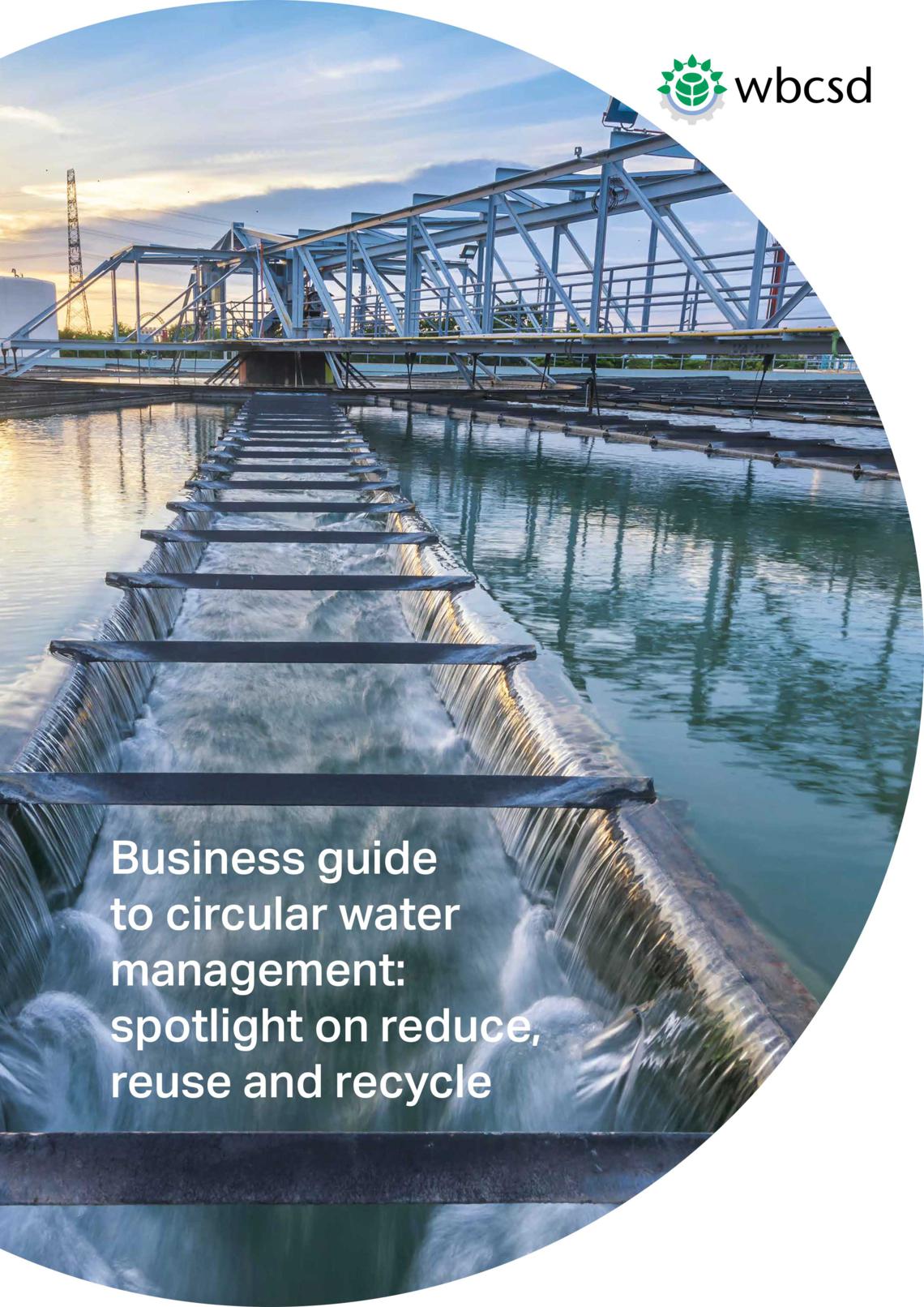
This Business Guide aims to help companies in developing strategies to respond to challenges of water availability by implementing circular water management practices. Companies may be at the beginning of their water management journey or may already have a water management strategy in place. In either case, this Business Guide suggests ways to overcome common barriers encountered in framing or implementing a strategy for circular water management, focusing on the reduce, reuse and recycle steps in the 5Rs approach (reduce, reuse, recycle, restore and recover water resources). The practical advice on raising awareness and supporting dialogue aims to help companies engage stakeholders. Guidance on developing a solid business case for reducing water use, reusing or recycling water aims to help companies ensure an acceptable return on investment by taking account of the true cost of water, and to help them comply with regulations on water intake and discharge. The overview of practical tools, methodologies, 2 examples and insights, draw on experiences in responding to risks. The case studies on reducing water use, reusing, recycling, restoring water reserves and recovering valuable resources from wastewater identify opportunities. Best practices drawn from these case studies and the distillation of key success factors show ways to overcome barriers.
Chapter 2 explains the 5Rs approach and how to use a risk-based method to develop a circular water management strategy. Chapter 3 addresses regulatory frameworks, which are important drivers as well as barriers. This chapter provides an overview of regulatory approaches to initiate water reuse and recycling worldwide, and shows that water scarcity does not always lead to more stringent regulations. Chapter 4 focuses on the main barriers companies encounter in water management and gives examples of ways to overcome them. Chapter 5 stresses the importance of understanding the main drivers for developing and upholding water management plans. This chapter shows how companies have implemented the 5Rs approach, and the key success factors and enablers through case studies provided by WBCSD members. Chapter 6 describes tools to help tackle barriers, for instance through a corporate water strategy, by identifying organizational risks or by prioritizing sites that need more sustainable water management plans.
There are many ways companies can reduce, reuse and recycle water. Chapter 7 gives an overview of water-quality requirements for different uses and technologies to fulfill these requirements. Chapter 8 explains the economics in building a business case for investment in water reduction, reuse and recycling projects. A viable business case can be built for recovering (one of the 5Rs) energy, resources and nutrients, or reducing energy consumption through a reduction in water usage (one of the 5Rs). Chapter 9 provides a decision flow chart. The flow chart takes a 5Rs approach, first identifying the drivers for implementing circular water management, focusing on reduction, reuse, recycling and replenishment. Checklists provide guidance on what to consider and how to implement circular water management projects at the corporate and site level.

